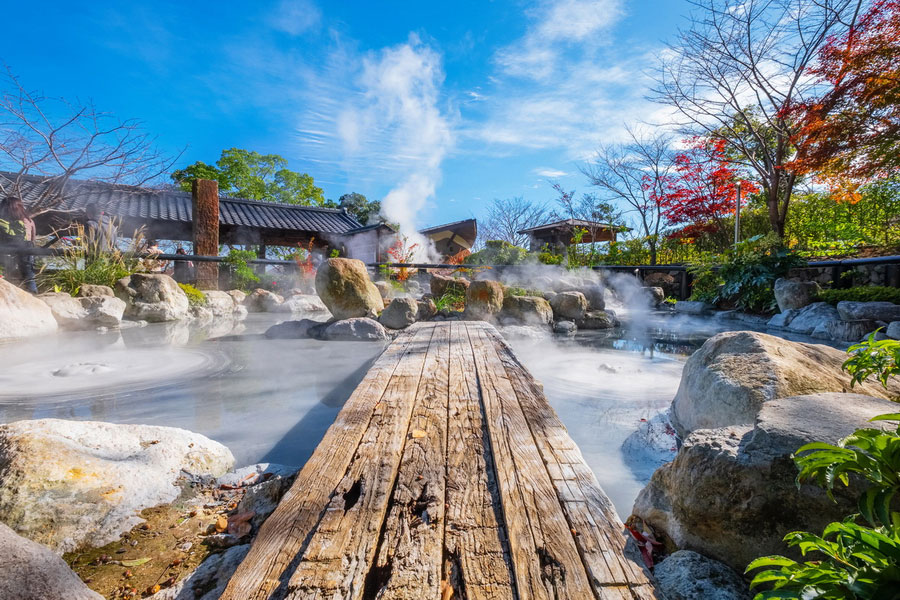
Hot springs, known as onsens, are one of the most iconic cultural experiences in Japan, deeply intertwined with the country’s history, nature, and philosophy of well-being. This publication serves as a beginner's guide to Japanese onsens, covering the different types, etiquette, and essential tips for your visit.
Onsen History and Cultural Significance
The history of onsen culture begins with the Nara period (710-794), when these hot springs were utilized not only for bathing but also for religious rituals. Emperors, samurai, and monks revered these springs for their healing and spiritual properties. Over time, onsen became accessible to all, symbolizing tranquility and harmony with nature.
Visiting an onsen is a ritual that goes beyond mere bathing. It is a holistic experience aimed at deep relaxation and spiritual rejuvenation. Many onsens are nestled in remote, scenic locations, offering the perfect atmosphere for meditation and appreciating the natural surroundings. For instance, Hakone’s onsen offers breathtaking views of Mount Fuji, while Noboribetsu in Hokkaido is well-known for its therapeutic waters nestled among dense forests.
Onsen Etiquette and Rules

Respect for tradition is paramount when visiting an onsen:
- Thoroughly wash before entering the water to show respect for other bathers.
- Bathing is done totally nude, as swimwear is not allowed.
- A small towel can be used out of modesty but should not touch the water.
- The atmosphere should remain peaceful, so keep conversations quiet and brief.
- Respect others' personal space and ensure not to disturb the serene environment.
In addition to the standard etiquette, it is important to note that some onsens do not allow visitors with tattoos, as they can be associated with organized crime in Japan. If you have tattoos, it is advisable to check the onsen’s policy beforehand or consider visiting an onsen that explicitly permits them.
Healing Properties of Hot Springs
The mineral-rich waters of onsens are believed to have therapeutic effects, helping with conditions ranging from arthritis to insomnia. Onsen therapy is a recognized practice in Japan, emphasizing the healing power of regular hot spring visits.
Types of Onsens : What to Expect
Over 3,000 hot springs can be found in Japan and each with unique characteristics:
- Sulfur Springs: Known for benefiting the skin and aiding in the treatment of skin conditions and wound healing.
- Saline Springs: Rich in minerals, these help to relax muscles, improve circulation, and reduce stress.
- Carbonic Springs: Having a slight carbon dioxide fizz, these are efficient for hypertension and boosting blood circulation.
Onsens in Modern Japan

While steeped in tradition, onsens have adapted to modern times. Visitors can find everything from traditional rustic baths to modern complexes featuring spas, massage rooms, and gourmet restaurants. Many ryokans (traditional inns) offer private onsens, perfect for those seeking a more intimate experience. Some onsens, especially those in mountainous areas, provide the magical experience of bathing outdoors in the snow.
Hot springs are an integral part of Japanese life, embodying respect for nature, the pursuit of harmony, and mindfulness. Immersing yourself in an onsen offers a profound connection to Japan’s cultural and spiritual roots, providing a sense of peace and relaxation that is deeply embedded in the country’s way of life.

